Table of Contents
India is known for its rich cultural and spiritual heritage, and its numerous ancient temples and spiritual sites are a testament to this legacy. From the magnificent structures of the Khajuraho Group of Temples to the revered Sri Padmanabhaswamy Temple, India is home to some of the most famous and awe-inspiring temples in the world. The Meenakshi Temple in Madurai, the Sri Radha Krishna Temple in Mathura, and the Jagannath Temple in Puri are just a few of the many famous temples that attract millions of pilgrims and tourists every year.
These temples offer a unique blend of stunning architecture, rich cultural heritage, and spiritual significance, and are sure to provide an unforgettable experience for anyone who visits them.

List of Most Popular Temples in India
| Temple Name | City/State Name |
| Badrinath Temple | Chamoli, Uttarakhand |
| Sun Temple | Konark, Odisha |
| Brihadeeswara Temple | Thanjavur, Tamil Nadu |
| Somnath Temple | Somnath Gujarat |
| Kedarnath Temple | Rudraprayag, Uttarakhand |
| Sanchi Stupa | Sanchi, Madhya Pradesh |
| Ramanathaswamy Temple | Rameshwaram, Tamil Nadu |
| Vaishno Devi Temple | Katra, Jammu and Kahsmir |
| Siddhivinayak Temple | Mumbai, Maharashtra |
| Gangotri Temple | Uttarkashi, Uttarakhand |
| Golden Temple | Amritsar, Punjab |
| Kashi Vishwanath Temple | Varanasi, Uttar Pradesh |
| Shri Jagannath Temple | Puri, Odisha |
| Yamunotri Temple | Uttarkashi, Uttarakhand |
| Meenakshi Temple | Madurai, Tamil Nadu |
| Amarnath Cave Temple | Jammu and Kashmir |
| Lingaraja Temple | Bhubaneswar, Odisha |
| Tirupati Balaji Temple | Tirumala, Andhra Pradesh |
| Kanchipuram Temples | Kanchipuram, Tamil Nadu |
| Khajuraho Temple | Khajuraho, Madhya Pradesh |
| Virupaksha Temple | Hampi, Karnataka |
| Akshardham Temple | Delhi |
| Shri Digambar Jain Lal Mandir | Delhi |
| Gomateshwara Temple | Shravanabelagola, Karnataka |
| Ranakpur Temple | Pali, Rajasthan |
| Shirdi Sai Baba Temple | Shirdi, Maharashtra |
| Shri Padmanabhaswamy Temple | Trivendrum, Kerala |
| Dwarkadhish Temple | Dwarka, Gujarat |
| Laxminarayan Temple | Delhi |
| Iskcon Temple | Vrindavan, Uttar Pradesh |
| Mahabodhi Temple | Gaya, Bihar |
| Kamakhya Temple | Guwahati, Assam |
| Neelkanth Mahadev Temple | Rishikesh, Uttarakhand |
| Mukteswara Temple | Bhubaneswar, Odisha |
| Sri Ranganathaswamy Temple | Srirangam, Karnataka |
1. Sri Ranganathaswamy Temple, Tamil Nadu
Sri Ranganathaswamy Temple, located in the city of Srirangam, Tamil Nadu, is one of the largest Hindu temples in the world and a major pilgrimage destination for followers of the Vaishnavite tradition. The temple is dedicated to Ranganatha, a reclining form of the Hindu god Vishnu, and is considered one of the 108 “divya desams” or sacred abodes of Vishnu.
History and Significance
The temple has a rich history, with its origins tracing back to the 8th century CE. It was expanded and renovated over the centuries by various rulers, including the Cholas, Pandyas, and Vijayanagara Empire. The temple is also believed to have been visited by many saints and scholars, including the Alwars, who were instrumental in spreading the Vaishnavite tradition in South India.
Architecture and Features
The Sri Ranganathaswamy Temple complex covers an area of 156 acres and has 21 gopurams (towering gateways) and several mandapams (pillared halls). The temple also boasts of a number of paintings, sculptures, and inscriptions that offer a glimpse into the temple’s history and the religious and cultural traditions of South India.
2. Meenakshi Temple, Tamil Nadu

The Meenakshi Temple, located in the city of Madurai in Tamil Nadu, is one of the ancient and most famous Hindu temples in India. Dedicated to the goddess Meenakshi, an incarnation of the goddess Parvati, and her consort, Lord Shiva, the temple attracts millions of devotees and tourists every year.
History and Significance
The Meenakshi Temple has a rich history, with its origins tracing back to the 6th century CE. It was expanded and renovated over the centuries by various rulers, including the Nayaks and the Madurai Sultanate. The temple is also an important center of Tamil culture and heritage, and has been mentioned in several ancient texts, including the Sangam literature.
Architecture and Features
The Meenakshi Temple complex covers an area of 14 acres and has 12 gopurams and several mandapams, the most famous of which is the Thousand Pillar Hall. The temple is known for its intricate sculptures and vibrant paintings that depict scenes from Hindu mythology. The temple is also famous for its musical pillars, which produce different musical notes when struck.
3. Golden Temple, Punjab

The Golden Temple, also known as Sri Harmandir Sahib, is a Sikh gurdwara located in the city of Amritsar, Punjab. It is one of the most important pilgrimage sites for Sikhs and a symbol of the Sikh faith.
History and Significance
The Golden Temple was founded in the 16th century by the fourth Sikh Guru, Guru Ram Das, and was later renovated and covered in gold by the Sikh ruler Maharaja Ranjit Singh in the 19th century. The temple is considered a symbol of equality and justice, as anyone, regardless of caste, religion, or gender, can seek refuge and spiritual guidance there.
Architecture and Features
The Golden Temple complex covers an area of 47 acres and has several buildings, including the central shrine, the sarovar (holy tank), and the Langar Hall, where free meals are served to visitors. The temple is known for its golden dome, which is covered in 750 kg of gold and its four entrances, symbolizing the openness and acceptance of all people. The interior of the temple is also adorned with intricate carvings and paintings, and the temple walls are inlaid with precious stones and marble.
4. Jagannath Temple, Odisha

The Jagannath Temple is a Hindu temple located in the city of Puri in Odisha. Dedicated to Lord Jagannath, a form of Lord Vishnu, the temple is one of the four major pilgrimage sites for Hindus, known as the Char Dham.
History and Significance
The Jagannath Temple has a rich history, with its origins dating back to the 12th century CE. It was built by King Anantavarman Chodaganga Deva, and has been expanded and renovated over the centuries by various rulers. The temple is considered one of the most sacred places in India and attracts millions of pilgrims every year.
Architecture and Features
The Jagannath Temple complex covers an area of approximately 400,000 square feet and has several buildings, including the main shrine, the Narendra Tank, and the Hall of Offerings. The temple is known for its striking architecture, with its tall, curvilinear spire reaching a height of 214 feet. The temple is also famous for its annual Rath Yatra festival, where the deities are taken out in a grand procession on decorated chariots.
5. Kashi Vishwanath Temple, Uttar Pradesh
The Kashi Vishwanath Temple is a Hindu temple located in the city of Varanasi in Uttar Pradesh. Dedicated to Lord Vishwanath, a form of Lord Shiva, the temple is one of the most revered shrines in India and a major pilgrimage destination for Hindus.
History and Significance
The Kashi Vishwanath Temple has a rich history, with its origins dating back to the 11th century CE. The temple has been destroyed and reconstructed several times over the centuries, with the current temple being built in the 18th century by Maratha ruler Ahilyabai Holkar. The temple is considered one of the most sacred places in India, and is believed to be one of the twelve “jyotirlinga” shrines of Lord Shiva.
Architecture and Features
The Kashi Vishwanath Temple complex covers an area of approximately 5 acres and has several buildings, including the main shrine, the Manikarnika Ghat, and the Dasaswamedh Ghat. The temple is known for its golden dome and its location on the banks of the River Ganges, considered one of the most sacred rivers in India. The temple attracts a large number of pilgrims and tourists, who come to offer prayers, take a dip in the river, and perform various rituals.
6. Shirdi Sai Baba Temple, Maharashtra

The Shirdi Sai Baba Temple is a shrine dedicated to the 19th-century saint and mystic, Sai Baba of Shirdi. Located in the town of Shirdi in Maharashtra, the temple is one of the most revered shrines in India and attracts millions of pilgrims and tourists every year.
History and Significance
Sai Baba of Shirdi was a saint and mystic who lived in the town of Shirdi in the late 19th and early 20th centuries. He was revered by people of all religions, and his teachings and miracles continue to inspire millions of people today. The temple was built in his honor, and has become one of the most important pilgrimage sites for his devotees.
Architecture and Features
The Shirdi Sai Baba Temple complex covers an area of approximately 15 acres and has several buildings, including the main shrine, the Dwarkamai Mosque, and the Chavadi. The temple is known for its beautiful architecture, with its large central dome and intricate carvings. The temple also has several halls and rooms, including the Samadhi Hall, where Sai Baba’s body was laid to rest.
7. Meenakshi Amman Temple, Tamil Nadu
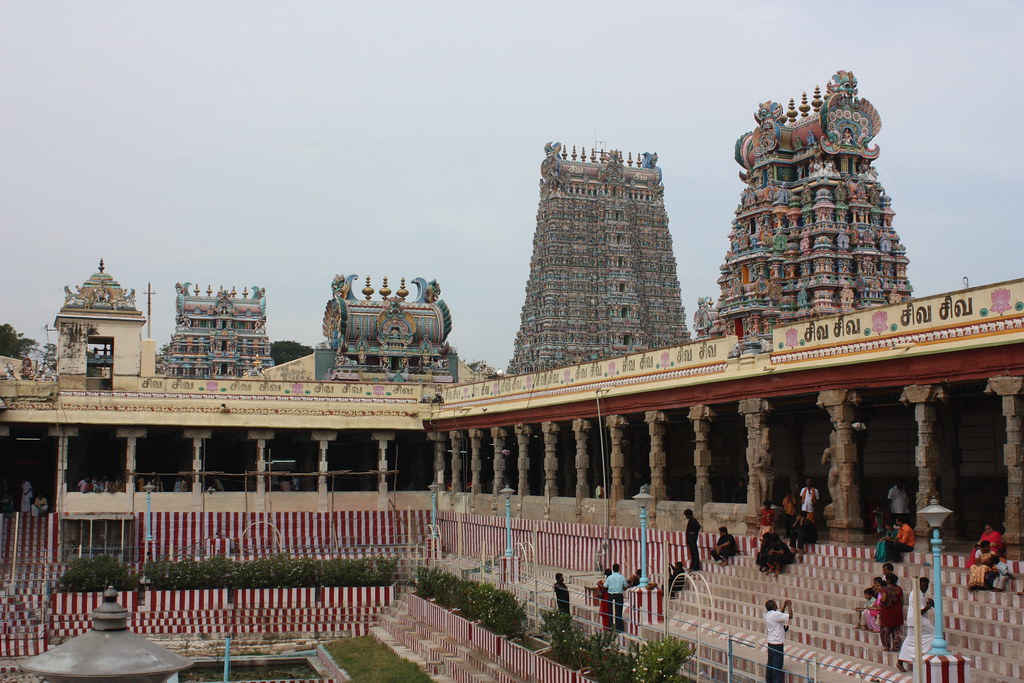
The Meenakshi Amman Temple is a Hindu temple located in the city of Madurai in Tamil Nadu. Dedicated to the goddess Meenakshi, an incarnation of Parvati, and her consort, Lord Sundareshwar, the temple is one of the largest and most famous temples in South India.
History and Significance
The Meenakshi Amman Temple has a rich history, with its origins dating back to the 6th century CE. The temple has been expanded and renovated over the centuries, with the current structure being built in the 17th century by Nayak ruler Thirumalai Nayakar. The temple is considered one of the most sacred places in India and attracts millions of pilgrims every year.
Architecture and Features
The Meenakshi Amman Temple complex covers an area of approximately 14 acres and has several buildings, including the main shrine, the Thousand Pillared Hall, and the Golden Lotus Tank. The temple is known for its striking architecture, with its towering gopurams, or gateways, and its intricate carvings and sculptures. The temple also has several halls and courtyards, and is surrounded by a moat and a beautiful garden.
8. Sri Ranganathaswamy Temple, Tamil Nadu
The Sri Ranganathaswamy Temple is a Hindu temple located in the city of Srirangam in Tamil Nadu. Dedicated to Lord Ranganatha, a form of Lord Vishnu, the temple is one of the largest and most famous temples in South India.
History and Significance
The Sri Ranganathaswamy Temple has a rich history, with its origins dating back to the 9th century CE. The temple has been expanded and renovated over the centuries, with the current structure being built in the 14th century by the Vijayanagara Empire. The temple is considered one of the most sacred places in India and is one of the 108 Divya Desams, or sacred shrines, of Lord Vishnu.
Architecture and Features
The Sri Ranganathaswamy Temple complex covers an area of approximately 156 acres and has several buildings, including the main shrine, the Sri Venugopala Swamy Temple, and the Alankara Mandapam. The temple is known for its grand architecture, with its towering gopurams, intricate carvings and sculptures, and beautiful halls and courtyards. The temple also has a large tank, the Akhilandam, and a garden, the Padma Theertham.
9. Tirumala Venkateswara Temple, Andhra Pradesh

The Tirumala Venkateswara Temple is a Hindu temple located in the town of Tirumala in Andhra Pradesh. Dedicated to Lord Venkateswara, a form of Lord Vishnu, the temple is one of the most famous and wealthiest temples in India.
History and Significance
The Tirumala Venkateswara Temple has a rich history, with its origins dating back to the 9th century CE. The temple has been expanded and renovated over the centuries, with the current structure being built in the 16th century. The temple is considered one of the most sacred places in India and is one of the 108 Divya Desams of Lord Vishnu. It attracts millions of pilgrims every year, especially during the annual Brahmotsavam festival.
Architecture and Features
The Tirumala Venkateswara Temple complex covers an area of approximately 21 acres and has several buildings, including the main shrine, the Padmavathi Temple, and the Tiruchanur Temple. The temple is known for its grand architecture, with its towering gopurams, intricate carvings and sculptures, and beautiful halls and courtyards. The temple is also known for its wealth, with gold plating covering much of the main shrine and valuable jewels and gold ornaments on display.
10. ISKCON Temple, Delhi
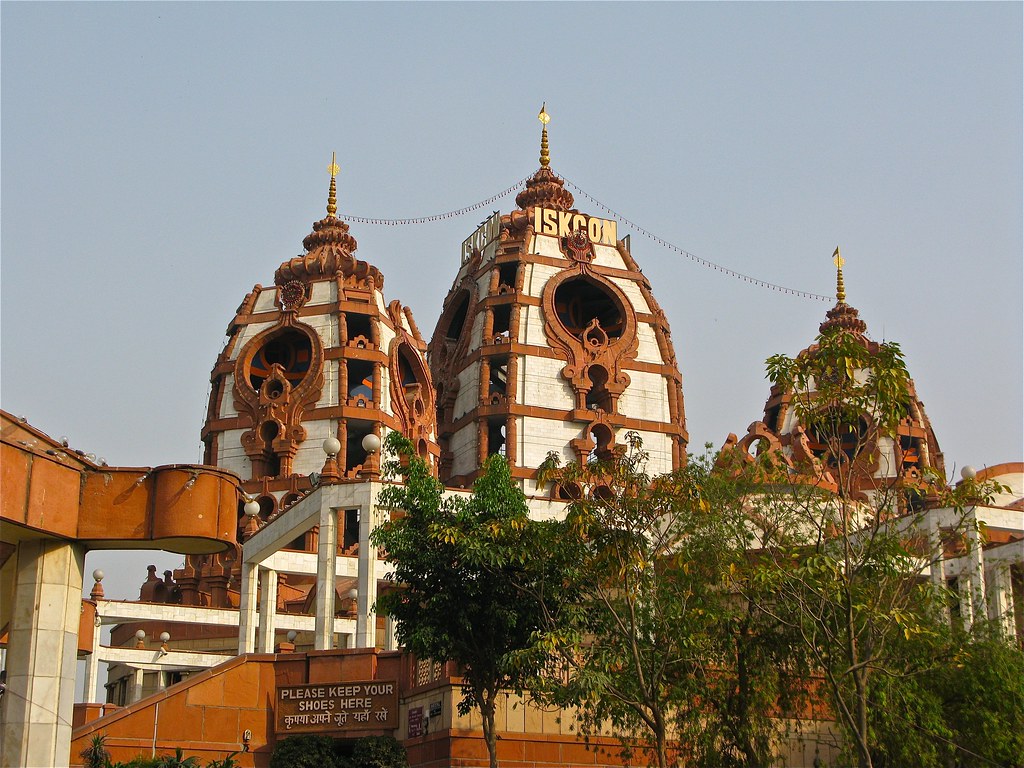
The ISKCON Temple, also known as the Sri Sri Radha Parthasarathi Mandir, is a Hindu temple located in the city of Delhi. Dedicated to Lord Krishna and his consort, Radha, the temple is one of the largest and most famous temples of the International Society for Krishna Consciousness (ISKCON) movement.
History and Significance
The ISKCON Temple was founded in the 1970s and is part of the ISKCON movement, which was founded in the United States in 1966. The temple is considered a holy place for devotees of Lord Krishna and attracts thousands of visitors every year.
Architecture and Features
The ISKCON Temple complex covers an area of approximately 5 acres and has several buildings, including the main shrine, the Krishna-Balarama Temple, and the Radha-Krishna Temple. The temple is known for its beautiful architecture, with its intricate carvings and sculptures, and its large central dome. The temple also has several halls and rooms for classes and cultural activities.
11. Ramanathaswamy Temple, Tamil Nadu
The Ramanathaswamy Temple is a Hindu temple located in the city of Rameswaram in Tamil Nadu. Dedicated to Lord Shiva, the temple is one of the most famous and sacred temples in South India and is one of the twelve Jyotirlinga shrines of Lord Shiva.
History and Significance
The Ramanathaswamy Temple has a rich history, with its origins dating back to the 12th century CE. The temple has been expanded and renovated over the centuries, with the current structure being built in the 17th century. The temple is considered one of the most sacred places in India and attracts millions of pilgrims every year, especially during the annual Mahashivaratri festival.
Architecture and Features
The Ramanathaswamy Temple complex covers an area of approximately 15 acres and has several buildings, including the main shrine, the Agni Theertham, and the Gandhamadhana Parvatham. The temple is known for its intricate architecture, with its towering gopurams, beautiful halls and courtyards, and intricate carvings and sculptures. The temple is also known for its unique location on an island in the Gulf of Mannar.
12. Sri Padmanabhaswamy Temple, Kerala

The Sri Padmanabhaswamy Temple is a Hindu temple located in the city of Thiruvananthapuram in Kerala. Dedicated to Lord Vishnu, the temple is one of the most famous and richest temples in India.
History and Significance
The Sri Padmanabhaswamy Temple has a rich history, with its origins dating back to the 8th century CE. The temple has been expanded and renovated over the centuries, with the current structure being built in the 18th century. The temple is considered one of the most sacred places in India and attracts thousands of pilgrims every year.
Architecture and Features
The Sri Padmanabhaswamy Temple complex covers an area of approximately 2 acres and has several buildings, including the main shrine, the Kautuka Mandapam, and the Natakasala. The temple is known for its intricate architecture, with its beautiful halls and courtyards, and intricate carvings and sculptures. The temple is also known for its wealth, with valuable jewels and gold ornaments on display and stored in its underground vault.
13. Sri Kamakshi Temple, Tamil Nadu
The Sri Kamakshi Temple is a Hindu temple dedicated to the goddess Kamakshi, located in the city of Kanchipuram in Tamil Nadu. The temple is considered one of the most important and sacred Hindu temples dedicated to the worship of the goddess Kamakshi and is a popular destination for tourists and pilgrims alike.
History and Significance
The Sri Kamakshi Temple has a long history, with its origins dating back to the 2nd century CE. The temple is considered a symbol of the cultural and spiritual heritage of Tamil Nadu and attracts millions of pilgrims every year, who come to offer their prayers and seek blessings from the goddess Kamakshi. The temple is also a popular destination for tourists, who are fascinated by its stunning architecture and rich cultural heritage.
Architecture and Features
The Sri Kamakshi Temple is known for its grand architecture, with its beautiful halls and courtyards, and intricate carvings and sculptures. The temple is also known for its spiritual significance, as one of the most sacred places in Hinduism dedicated to the worship of the goddess Kamakshi, and is a popular destination for tourists and pilgrims. The temple complex covers an area of approximately 2.5 acres and features several smaller shrines and temples, as well as intricate carvings and sculptures that depict scenes from Hindu mythology. The temple is also known for its stunning tower and impressive gopuram, which are major attractions for tourists and pilgrims alike.
14. Kedarnath Temple, Uttarakhand

The Kedarnath Temple is a Hindu temple located in the town of Kedarnath in Uttarakhand. Dedicated to Lord Shiva, the temple is one of the most famous and sacred temples in India and is one of the twelve Jyotirlinga shrines of Lord Shiva.
History and Significance
The Kedarnath Temple has a rich history, with its origins dating back to the 8th century CE. The temple has been destroyed and rebuilt several times over the centuries, with the current structure being built in the 17th century. The temple is considered one of the most sacred places in India and attracts thousands of pilgrims every year, especially during the annual Kedarnath Yatra.
Architecture and Features
The Kedarnath Temple is known for its simple architecture, with its beautiful location in the midst of the Himalayas and surrounded by snow-capped peaks. The temple is also known for its serene and peaceful atmosphere, making it a popular destination for spiritual seekers and pilgrims.
15. Hampi Virupaksha Temple, Karnataka
The Hampi Virupaksha Temple is a Hindu temple located in the town of Hampi in Karnataka. Dedicated to Lord Shiva, the temple is one of the most famous and historic temples in India.
History and Significance
The Hampi Virupaksha Temple has a rich history, with its origins dating back to the 7th century CE. The temple has been expanded and renovated over the centuries, with the current structure being built in the 16th century. The temple is considered one of the most sacred places in India and is a popular destination for tourists and pilgrims.
Architecture and Features
The Hampi Virupaksha Temple complex covers an area of approximately 1.5 acres and has several buildings, including the main shrine, the Pushkarni, and the Nandi Mantapa. The temple is known for its historic architecture, with its beautiful halls and courtyards, and intricate carvings and sculptures. The temple is also known for its picturesque location, surrounded by hills and the Tungabhadra River.
16. Annapoorna Temple, Maharashtra
The Annapoorna Temple is a Hindu temple located in the city of Pune in Maharashtra. Dedicated to the goddess Annapoorna, the goddess of food and nourishment, the temple is considered one of the most unique and important temples in India.
History and Significance
The Annapoorna Temple has a long history, with its origins dating back to the 8th century CE. The temple is considered one of the 51 Shakti Peeths, where the goddess Annapoorna is worshiped as the embodiment of divine nourishment. The temple is considered a powerful place of worship and attracts thousands of pilgrims every year.
Architecture and Features
The Annapoorna Temple complex covers an area of approximately 2 acres and has several buildings, including the main shrine, the Nandi Mandapam, and the Kalyana Mantapam. The temple is known for its unique architecture, with its intricate carvings and sculptures, and beautiful halls and courtyards. The temple is also known for its cultural and spiritual significance, and is a popular destination for tourists and pilgrims.
17. Mahabodhi Temple, Bihar
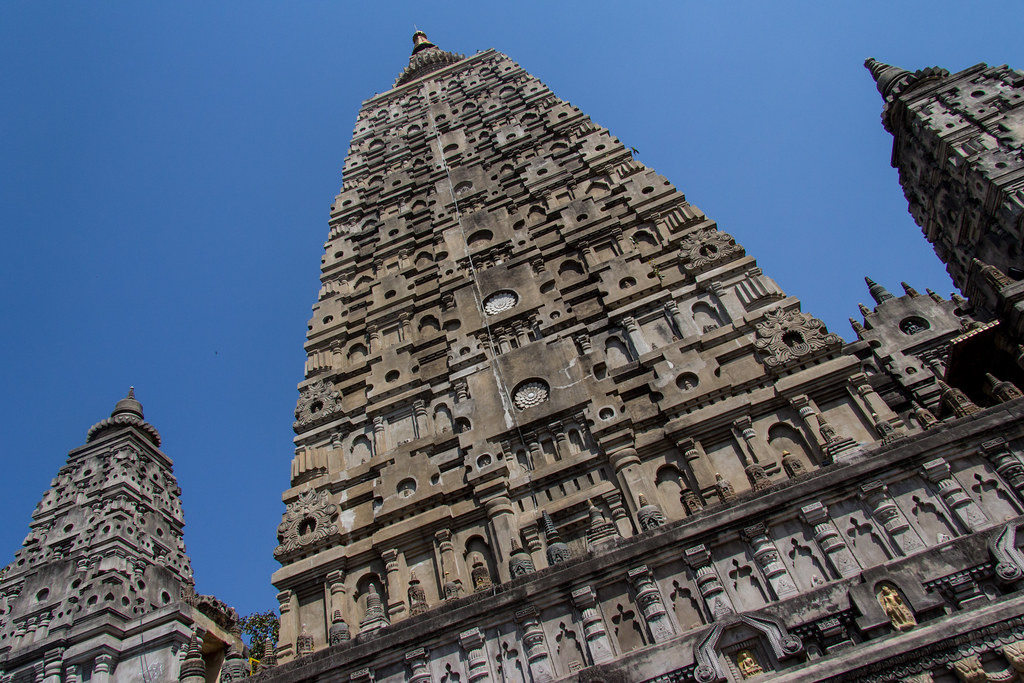
The Mahabodhi Temple is a Buddhist temple located in the city of Bodh Gaya in Bihar. The temple is considered one of the most important Buddhist pilgrimage sites in the world and is believed to be the place where the Buddha achieved enlightenment.
History and Significance
The Mahabodhi Temple has a rich history, with its origins dating back to the 3rd century BCE. The temple has been expanded and renovated over the centuries, with the current structure being built in the 5th century CE. The temple is considered one of the most sacred places in Buddhism and attracts millions of pilgrims every year, especially during the annual Bodhi Puja festival.
Architecture and Features
The Mahabodhi Temple complex covers an area of approximately 1.5 acres and has several buildings, including the main shrine, the Bodhi Tree, and the Vajrasana. The temple is known for its historic architecture, with its beautiful halls and courtyards, and intricate carvings and sculptures. The temple is also known for its spiritual significance, as the place where the Buddha achieved enlightenment, and is a popular destination for tourists and pilgrims.
18. Akshardham Temple, Delhi

The Akshardham Temple is a Hindu temple located in the city of Delhi. Dedicated to the god Swaminarayan, the temple is considered one of the largest and most impressive Hindu temples in India.
History and Significance
The Akshardham Temple was built in the early 21st century and is considered one of the most modern and technologically advanced temples in India. The temple is dedicated to the teachings of the god Swaminarayan and is considered a place of peace, learning, and devotion. The temple attracts millions of visitors every year, both for its religious significance and its cultural and architectural beauty.
Architecture and Features
The Akshardham Temple complex covers an area of approximately 20 acres and has several buildings, including the main shrine, the Sahajanand Darshan, and the Neelkanth Abhishek. The temple is known for its grand architecture, with its beautiful halls and courtyards, and intricate carvings and sculptures. The temple is also known for its advanced technology, including light and sound shows, and is a popular destination for tourists and pilgrims.
19. Raghunath Temple, Jammu and Kashmir
The Raghunath Temple is a Hindu temple located in the city of Jammu in Jammu and Kashmir. Dedicated to the god Rama, the temple is considered one of the largest and most impressive Hindu temples in North India.
History and Significance
The Raghunath Temple has a long history, with its origins dating back to the 19th century CE. The temple was built by the then-ruler of Jammu, Maharaja Ranbir Singh, as a symbol of his devotion to the god Rama. The temple is considered a symbol of the cultural and spiritual heritage of Jammu and Kashmir and attracts thousands of pilgrims every year, especially during the annual Navratri festival.
Architecture and Features
The Raghunath Temple complex covers an area of approximately 1 acre and has several buildings, including the main shrine, the Raghunath Mandir, and the Garbhagriha. The temple is known for its grand architecture, with its beautiful halls and courtyards, and intricate carvings and sculptures. The temple also has a rich collection of Hindu scriptures and manuscripts, making it a popular destination for scholars and researchers.
20. Vaishno Devi Temple, Jammu and Kashmir

The Vaishno Devi Temple is a Hindu temple located in the Trikuta Mountains of Jammu and Kashmir. Dedicated to the goddess Vaishno Devi, the temple is considered one of the most important and sacred Hindu temples in India.
History and Significance
The Vaishno Devi Temple has a long history, with its origins dating back to ancient times. The temple is believed to be the abode of the goddess Vaishno Devi, who is considered an incarnation of the goddess Durga. The temple attracts millions of pilgrims every year, who make a pilgrimage to the temple to offer their prayers and seek blessings from the goddess.
Architecture and Features
The Vaishno Devi Temple is a cave temple, located in a natural cave in the Trikuta Mountains. The temple is accessible by a steep climb, which takes several hours, and is considered a challenging journey for many pilgrims. The temple is known for its serene and peaceful atmosphere, and for the stunning views of the surrounding mountains and valleys.
21. Lingaraj Temple, Odisha
The Lingaraj Temple is a Hindu temple located in the city of Bhubaneswar in Odisha. Dedicated to the god Shiva, the temple is considered one of the most important and sacred Hindu temples in India.
History and Significance
The Lingaraj Temple has a long history, with its origins dating back to the 11th century CE. The temple is considered a symbol of the cultural and spiritual heritage of Odisha and attracts millions of pilgrims every year, who come to offer their prayers and seek blessings from the god Shiva. The temple is also a popular destination for tourists, who are fascinated by its stunning architecture and rich cultural heritage.
Architecture and Features
The Lingaraj Temple is known for its grand architecture, with its beautiful halls and courtyards, and intricate carvings and sculptures. The temple is also known for its spiritual significance, as one of the most sacred places in Hinduism, and is a popular destination for tourists and pilgrims. The temple complex covers an area of approximately 35 acres and is surrounded by several smaller shrines and temples, making it a must-visit destination for anyone interested in Hinduism and its cultural heritage.
22. Kamakhya Temple, Assam
The Kamakhya Temple is a Hindu temple located in the city of Guwahati in Assam. Dedicated to the goddess Kamakhya, the temple is considered one of the most important and sacred Hindu temples in North East India.
History and Significance
The Kamakhya Temple has a long history, with its origins dating back to ancient times. The temple is considered a symbol of the cultural and spiritual heritage of Assam and attracts millions of pilgrims every year, who come to offer their prayers and seek blessings from the goddess Kamakhya. The temple is also a popular destination for tourists, who are fascinated by its stunning architecture and rich cultural heritage.
Architecture and Features
The Kamakhya Temple is known for its stunning architecture, with its beautiful halls and courtyards, and intricate carvings and sculptures. The temple is also known for its spiritual significance, as one of the most sacred places in Hinduism, and is a popular destination for tourists and pilgrims. The temple complex covers an area of approximately 10 acres and is surrounded by several smaller shrines and temples, making it a must-visit destination for anyone interested in Hinduism and its cultural heritage.
23. Jambukeswarar Temple, Tamil Nadu
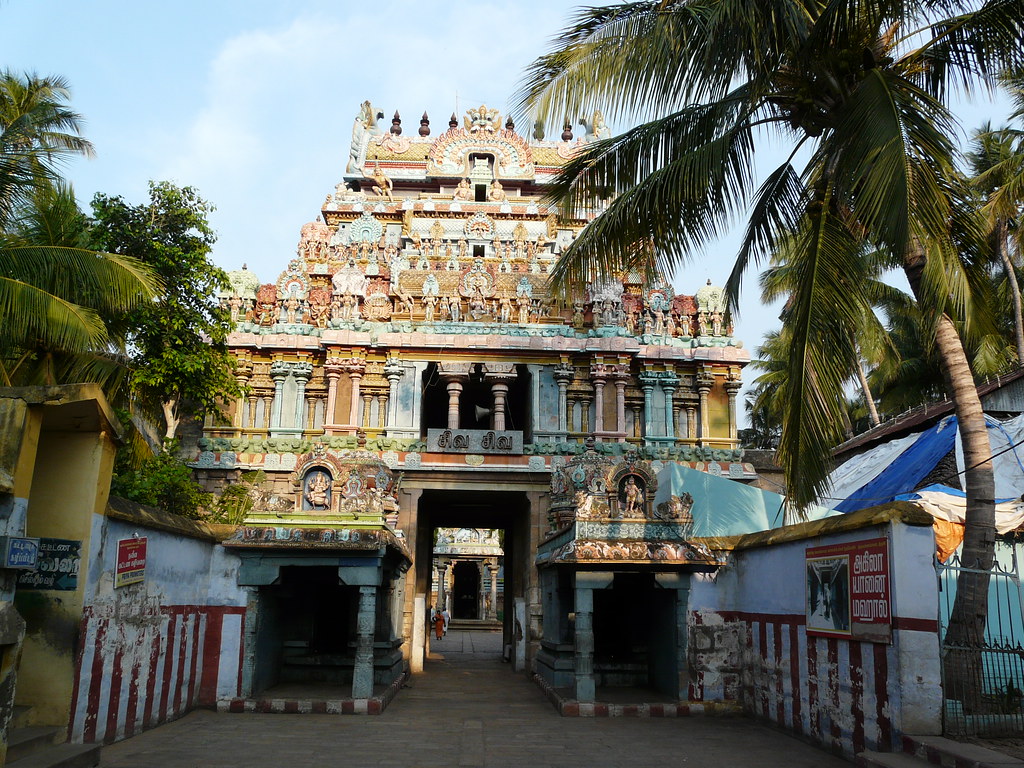
The Jambukeswarar Temple is a Hindu temple located in the city of Thiruvanaikaval in Tamil Nadu. Dedicated to the god Shiva, the temple is considered one of the most important and sacred Hindu temples in South India.
History and Significance
The Jambukeswarar Temple has a long history, with its origins dating back to the 2nd century CE. The temple is considered a symbol of the cultural and spiritual heritage of Tamil Nadu and attracts millions of pilgrims every year, who come to offer their prayers and seek blessings from the god Shiva. The temple is also a popular destination for tourists, who are fascinated by its stunning architecture and rich cultural heritage.
Architecture and Features
The Jambukeswarar Temple is known for its stunning architecture, with its beautiful halls and courtyards, and intricate carvings and sculptures. The temple is also known for its spiritual significance, as one of the most sacred places in Hinduism, and is a popular destination for tourists and pilgrims. The temple complex covers an area of approximately 6 acres and is surrounded by several smaller shrines and temples, making it a must-visit destination for anyone interested in Hinduism and its cultural heritage.
24. Sri Vadapalani Murugan Temple, Tamil Nadu
The Sri Vadapalani Murugan Temple is a Hindu temple dedicated to the god Murugan, located in the city of Chennai in Tamil Nadu. The temple is considered one of the most important and sacred Hindu temples in South India and is a popular destination for tourists and pilgrims alike.
History and Significance
The Sri Vadapalani Murugan Temple has a long history, with its origins dating back to the 19th century. The temple is considered a symbol of the cultural and spiritual heritage of Tamil Nadu and attracts millions of pilgrims every year, who come to offer their prayers and seek blessings from the god Murugan. The temple is also a popular destination for tourists, who are fascinated by its stunning architecture and rich cultural heritage.
Architecture and Features
The Sri Vadapalani Murugan Temple is known for its grand architecture, with its beautiful halls and courtyards, and intricate carvings and sculptures. The temple is also known for its spiritual significance, as one of the most sacred places in Hinduism dedicated to the worship of the god Murugan, and is a popular destination for tourists and pilgrims. The temple complex covers an area of approximately 2 acres and is surrounded by several smaller shrines and temples, making it a must-visit destination for anyone interested in Hinduism and its cultural heritage.
25. Sri Adi Kesava Perumal Temple, Tamil Nadu
The Sri Adi Kesava Perumal Temple is a Hindu temple dedicated to the god Vishnu, located in the city of Mylapore in Tamil Nadu. The temple is considered one of the most important and sacred Hindu temples dedicated to the worship of the god Vishnu and is a popular destination for tourists and pilgrims alike.
History and Significance
The Sri Adi Kesava Perumal Temple has a long history, with its origins dating back to the 7th century CE. The temple is considered a symbol of the cultural and spiritual heritage of Tamil Nadu and attracts millions of pilgrims every year, who come to offer their prayers and seek blessings from the god Vishnu. The temple is also a popular destination for tourists, who are fascinated by its stunning architecture and rich cultural heritage.
Architecture and Features
The Sri Adi Kesava Perumal Temple is known for its grand architecture, with its beautiful halls and courtyards, and intricate carvings and sculptures. The temple is also known for its spiritual significance, as one of the most sacred places in Hinduism dedicated to the worship of the god Vishnu, and is a popular destination for tourists and pilgrims. The temple complex covers an area of approximately 1.5 acres and features several smaller shrines and temples, as well as intricate carvings and sculptures that depict scenes from Hindu mythology. The temple is also known for its stunning tower and impressive gopuram, which are major attractions for tourists and pilgrims alike.
26. Sri Lakshminarasimha Temple, Andhra Pradesh
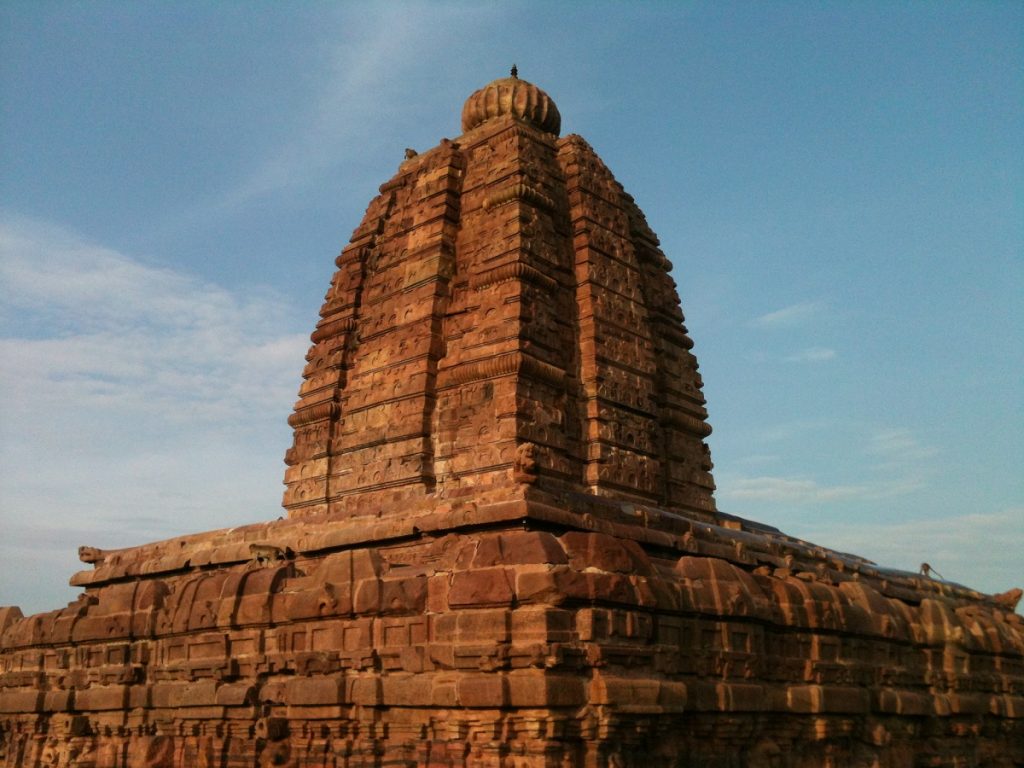
The Sri Lakshminarasimha Temple is a Hindu temple dedicated to the god Narasimha, located in the city of Mangalagiri in Andhra Pradesh. The temple is considered one of the most important and sacred Hindu temples dedicated to the worship of the god Narasimha and is a popular destination for tourists and pilgrims alike.
History and Significance
The Sri Lakshminarasimha Temple has a long history, with its origins dating back to the 16th century CE. The temple is considered a symbol of the cultural and spiritual heritage of Andhra Pradesh and attracts millions of pilgrims every year, who come to offer their prayers and seek blessings from the god Narasimha. The temple is also a popular destination for tourists, who are fascinated by its stunning architecture and rich cultural heritage.
Architecture and Features
The Sri Lakshminarasimha Temple is known for its grand architecture, with its beautiful halls and courtyards, and intricate carvings and sculptures. The temple is also known for its spiritual significance, as one of the most sacred places in Hinduism dedicated to the worship of the god Narasimha, and is a popular destination for tourists and pilgrims. The temple complex covers an area of approximately 1 acre and features several smaller shrines and temples, as well as intricate carvings and sculptures that depict scenes from Hindu mythology. The temple is also known for its stunning tower and impressive gopuram, which are major attractions for tourists and pilgrims alike.
27. Sri Prahlada Varada Anjaneya Temple, Andhra Pradesh
The Sri Prahlada Varada Anjaneya Temple is a Hindu temple dedicated to the god Hanuman, located in the city of Vijayawada in Andhra Pradesh. The temple is considered one of the most important and sacred Hindu temples dedicated to the worship of the god Hanuman and is a popular destination for tourists and pilgrims alike.
History and Significance
The Sri Prahlada Varada Anjaneya Temple has a long history, with its origins dating back to the 16th century CE. The temple is considered a symbol of the cultural and spiritual heritage of Andhra Pradesh and attracts millions of pilgrims every year, who come to offer their prayers and seek blessings from the god Hanuman. The temple is also a popular destination for tourists, who are fascinated by its stunning architecture and rich cultural heritage.
Architecture and Features
The Sri Prahlada Varada Anjaneya Temple is known for its grand architecture, with its beautiful halls and courtyards, and intricate carvings and sculptures. The temple is also known for its spiritual significance, as one of the most sacred places in Hinduism dedicated to the worship of the god Hanuman, and is a popular destination for tourists and pilgrims. The temple complex covers an area of approximately 1 acre and features several smaller shrines and temples, as well as intricate carvings and sculptures that depict scenes from Hindu mythology.
The temple is also known for its stunning tower and impressive gopuram, which are major attractions for tourists and pilgrims alike. In addition, the temple is also famous for its large statue of Hanuman, which is considered one of the tallest in the world and attracts many visitors from all over.
28. Sri Radha Krishna Temple, Uttar Pradesh
The Sri Radha Krishna Temple is a Hindu temple dedicated to the deities Radha and Krishna, located in the city of Mathura in Uttar Pradesh. The temple is considered one of the most important and sacred Hindu temples dedicated to the worship of Radha and Krishna and is a popular destination for tourists and pilgrims alike.
History and Significance
The Sri Radha Krishna Temple has a rich history, with its origins dating back to the 16th century CE. The temple is considered a symbol of the cultural and spiritual heritage of Uttar Pradesh and attracts millions of pilgrims every year, who come to offer their prayers and seek blessings from Radha and Krishna. The temple is also a popular destination for tourists, who are fascinated by its stunning architecture and rich cultural heritage.
Architecture and Features
The Sri Radha Krishna Temple is known for its grand architecture, with its beautiful halls and courtyards, and intricate carvings and sculptures. The temple is also known for its spiritual significance, as one of the most sacred places in Hinduism dedicated to the worship of Radha and Krishna, and is a popular destination for tourists and pilgrims. The temple complex covers an area of approximately 1 acre and features several smaller shrines and temples, as well as intricate carvings and sculptures that depict scenes from Hindu mythology.
The temple is also famous for its stunning tower and impressive gopuram, which are major attractions for tourists and pilgrims alike. In addition, the temple is also known for its beautiful gardens and lush green surroundings, which provide a serene and peaceful environment for visitors.
29. Badrinath Temple

Badrinath Temple is a Hindu temple dedicated to Lord Vishnu, located in the town of Badrinath in the state of Uttarakhand. It is one of the four sacred shrines in Hinduism, known as the Char Dham, and is considered one of the most important and sacred pilgrimage sites in India.
History and Significance
The Badrinath Temple has a rich history, with its origins dating back to ancient times. It is believed that the temple was established by the great saint and philosopher Adi Shankaracharya in the 8th century CE. The temple is considered a symbol of the cultural and spiritual heritage of India and attracts millions of pilgrims every year, who come to offer their prayers and seek blessings from Lord Vishnu.
Architecture and Features
The Badrinath Temple is known for its grand architecture, with its stunning halls and courtyards, and intricate carvings and sculptures. The temple is also known for its spiritual significance, as one of the most sacred places in Hinduism dedicated to the worship of Lord Vishnu, and is a popular destination for tourists and pilgrims. The temple complex covers an area of approximately 1 acre and features several smaller shrines and temples, as well as intricate carvings and sculptures that depict scenes from Hindu mythology.
The temple is also famous for its towering gopuram and impressive statue of Lord Vishnu, which are major attractions for tourists and pilgrims alike. In addition, the temple is surrounded by beautiful gardens and lush green surroundings, which provide a serene and peaceful environment for visitors.
30. Siddhivinayak Temple

Siddhivinayak Temple is a Hindu temple dedicated to Lord Ganesha, located in the city of Mumbai in the state of Maharashtra. It is one of the most popular and revered temples dedicated to Lord Ganesha and is a popular destination for tourists and pilgrims alike.
History and Significance
The Siddhivinayak Temple has a rich history, with its origins dating back to the early 19th century. The temple is considered a symbol of the cultural and spiritual heritage of Mumbai and attracts millions of pilgrims every year, who come to offer their prayers and seek blessings from Lord Ganesha. The temple is also a popular destination for tourists, who are fascinated by its stunning architecture and rich cultural heritage.
Architecture and Features
The Siddhivinayak Temple is known for its grand architecture, with its beautiful halls and courtyards, and intricate carvings and sculptures. The temple is also known for its spiritual significance, as one of the most sacred places in Hinduism dedicated to the worship of Lord Ganesha, and is a popular destination for tourists and pilgrims.
The temple complex covers an area of approximately 1 acre and features several smaller shrines and temples, as well as intricate carvings and sculptures that depict scenes from Hindu mythology. The temple is also famous for its impressive statue of Lord Ganesha and beautiful courtyard, which are major attractions for tourists and pilgrims alike. In addition, the temple is surrounded by beautiful gardens and lush green surroundings, which provide a serene and peaceful environment for visitors.
Conclusion
In conclusion, India is home to a rich heritage of ancient temples and spiritual sites, each with its own unique history, architecture, and significance. From the magnificent structures of the Khajuraho Group of Temples to the spiritual significance of the Sri Padmanabhaswamy Temple, India is a destination that offers something for everyone, whether you are a tourist, a pilgrim, or simply a lover of history and culture. Whether you are looking to immerse yourself in the rich history and cultural heritage of India, or simply to escape the hustle and bustle of modern life, these 30 unique temples are sure to provide an unforgettable experience.















